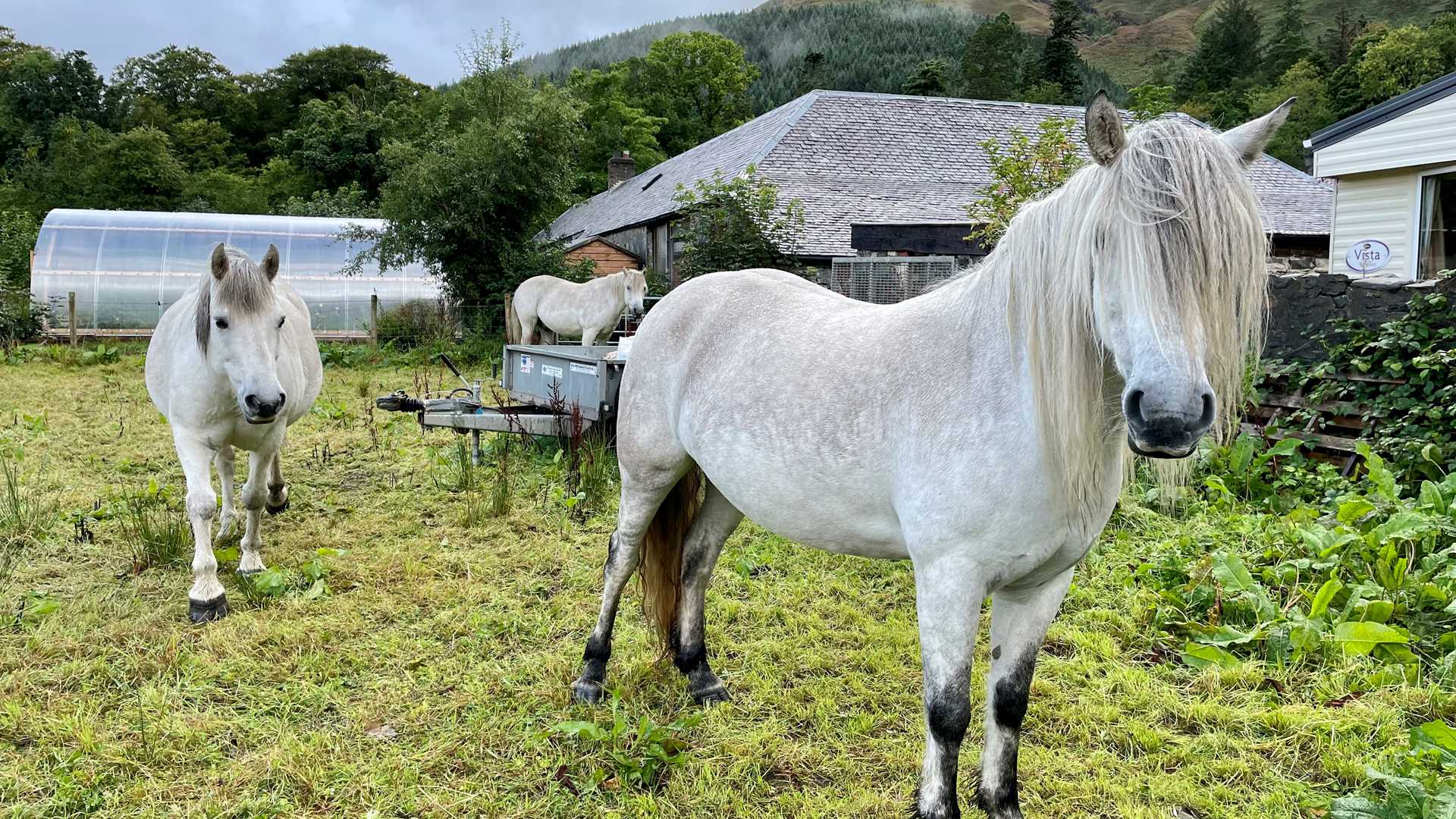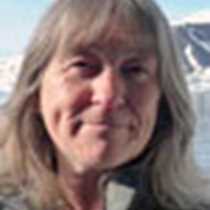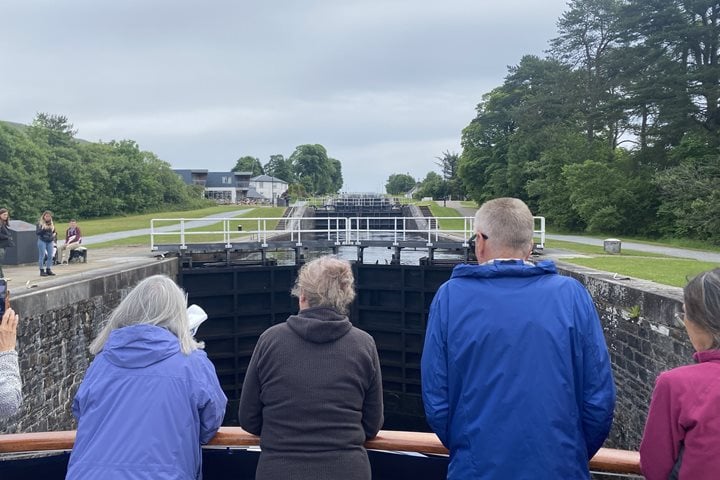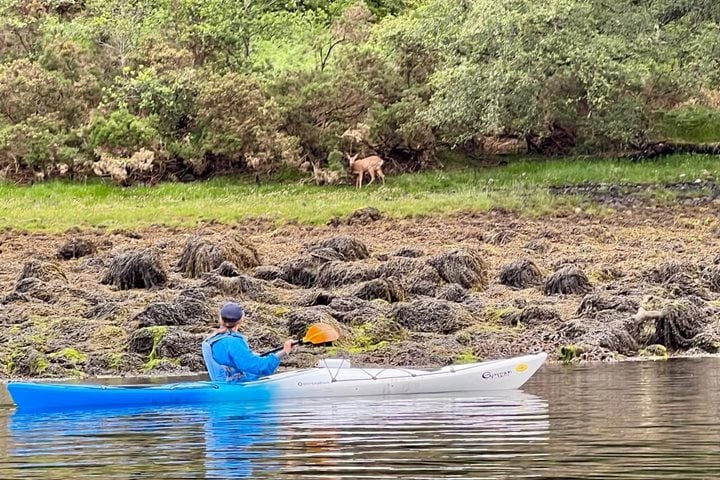Morning found us docked in Loch Nevis, at the tiny remote village of Inverie. No one chose to join expedition leader Jess and hotel manager Ciaran for a pre-breakfast dip in the bracing salt water, but there was plenty of enthusiasm for exploring the area on foot with a choice of uphill or shoreside walks. We passed the famous Old Forge Inn, the post office, a row of colorful cottages, and an old church on our way into the lush temperate rainforest that is so characteristic of Scotland’s west coast. Along the way were also some friendly Highland ponies (kept for deerstalking in the hills), the “Long Beach” shimmering with cockle and mussel shells, and beautiful views of the Lord of the Glens under a rainbow.
Bidding farewell to this friendly isolated community, we sailed out of
the sheltered sea loch and headed south. We passed the island of Rum with its
rugged mountainous profile, Eigg and its formidable pitchstone peak, and little
Muck, admiring how the dramatic geology of each island glowed in the sunlight.
Seabirds we observed in the area included a large raft of black guillemots
feeding on the water; we were also rewarded with a sighting of dolphins frolicking
among the whitecaps. Soon the Ardnamurchan peninsula came into view. This
westernmost point of the British mainland features a thirty-five-meter-high automated
lighthouse; it was designed by Alan Stevenson, uncle of author Robert Louis
Stevenson, and was built in 1849.
Under pleasant sunshine we turned into the Sound of Mull, lively with yachts and ferries plying back and forth, and into Tobermory Bay. Some guests ventured off to explore the town’s brightly painted shops and houses. Others joined Seomas for a geological walk investigating the island’s volcanic history, as preserved in the basalt and granitic rocks leading to the Rubha Nan Gall lighthouse. This building is another Stevenson engineering project (1857), and like all lighthouses in Scotland it is now automated.
This busy day continued with a visit to the Tobermory Distillery, where we learned about the traditional whisky production process and tasted some of their single-malts: a twelve-year-old “Tobermory” and the peaty “Ledaig.” After dinner our program concluded with a fascinating presentation from Caroline, of the Hebridean Whale and Dolphin Trust, about the cetaceans that live in these waters and their important work to protect and conserve them.







